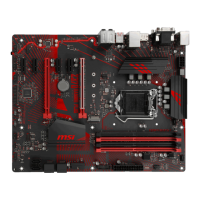
Do you have a question about the MSI Z370 GODLIKE GAMING and is the answer not in the manual?
| Brand | MSI |
|---|---|
| Model | Z370 GODLIKE GAMING |
| Category | Motherboard |
| Language | English |
Lists necessary tools and components for PC assembly.
Step-by-step guide for installing the CPU onto the motherboard socket.
Instructions for correctly inserting RAM modules into the DIMM slots.
Diagram and explanation for connecting front panel case connectors to the motherboard.
Steps for securely mounting the motherboard inside the PC chassis.
Guidance on connecting SATA storage devices like HDDs and SSDs.
Procedure for inserting and connecting a graphics processing unit (GPU).
How to connect external devices like keyboard, mouse, and monitor.
Details on connecting ATX and CPU power supply cables to the motherboard.
Final steps to power up the assembled computer system.
Table detailing the status and meaning of LAN port LEDs.
Diagram showing how to connect speakers and microphones to audio jacks.
Software utility for managing audio settings and effects.
Steps for attaching WiFi antennas to the motherboard.
Description of the button for updating BIOS without a CPU.
Details on the CPU socket, installation, and important notes.
Information on memory slots, installation recommendations, and important considerations.
Details on the PCI Express slots, their configurations, and multi-GPU setups.
Explains the function and usage of the PCIe slot enabling/disabling switch.
Step-by-step guide for setting up multiple graphics cards in SLI configuration.
Information on the U.2 interface port for NVMe storage devices.
Guide on installing M.2 modules and using the M.2 shield.
Instructions for installing the M.2 expansion card.
Description of SATA 6Gb/s connectors and their combination possibilities.
Details on connecting front panel switches and LEDs to JFP1 and JFP2.
Explanation of the GAME BOOST knob for CPU overclocking stages.
Function of the JSLOW1 jumper for extreme overclocking stability.
Pin definitions and connection guidance for ATX, CPU, and PCIe power connectors.
Information on connecting USB 2.0 ports and the USB Xpander.
Details on USB 3.1 Gen1 and Gen2 Type-C connectors.
How to connect thermistor cables for temperature monitoring.
Explanation of PWM and DC fan connectors and their pin definitions.
Details for connecting front panel audio jacks to JAUD1.
Functionality and setup for the chassis intrusion detection system.
Information regarding the Trusted Platform Module connector.
How to reset BIOS settings using the JBAT1 jumper.
Functionality of the switch for selecting between BIOS ROMs.
Description of the motherboard's power and reset buttons.
Explanation of OC Force Enter BIOS and OC Retry buttons.
How to connect RGB LED strips to JRGB1 and JRAINBOW1.
Indicates motherboard debug status (CPU, DRAM, VGA, BOOT).
LEDs indicating PCIe slot mode and M.2 card type.
Indicates the status of installed memory modules.
Shows when the Extreme Memory Profile (XMP) mode is enabled.
Indicates the fan control mode (PWM or DC).
LEDs showing fan speed ranges via color change.
Indicates which BIOS ROM is currently active.
Shows the control status of the GAME BOOST function.
Displays progress and error codes during POST.
Comprehensive lists of SEC, PEI, DXE, ACPI, and CPU temp codes.
Methods to access the BIOS setup utility.
Procedures for restoring BIOS to default settings.
Guides for updating BIOS via M-FLASH and Live Update 6.
Instructions for updating BIOS using the dedicated button.
Basic BIOS interface for viewing system info and configuring simple settings.
Comprehensive BIOS interface for detailed system configuration.
Configuration options for system date, time, storage, and system information.
Settings for onboard devices like LAN, audio, and USB controllers.
Configuration for system power behavior, ErP, and wake-up events.
Settings for Windows secure boot and key management.
Options for boot device sequence and logo display.
Settings for administrator/user passwords and CMOS clearing behavior.
Options to save/discard changes, restore defaults, and manage boot override.
Overclocking settings for CPU, memory, and system performance.
Utility for updating BIOS using a USB flash drive.
Features for managing overclocking profiles.
Tools for monitoring system temperatures, voltages, and fan speeds.
Guide for installing the operating system from a disc.
Steps to install necessary hardware drivers from the included disc.
Procedure for installing supplementary software utilities.
Application for managing and updating MSI software.
Software for automatic driver and BIOS updates.
Utility for system monitoring and tuning in OS.
Feature for easy CPU overclocking via hardware or software control.
Application for optimizing system performance for gaming.
Configures on-screen display information for gaming.
Feature to adjust display settings for eye comfort.
Optimizes system performance for Virtual Reality readiness.
Allows user-defined hotkeys for system control.
Utility for customizing mouse DPI and macros.
Selects system performance modes for various tasks.
Controls RGB LED lighting effects on MSI products.
Tool for creating Windows USB installation drives and software RAID.
Utility for creating software RAID configurations in Windows.
Creates a virtual RAM drive for faster storage access.
Manages Killer network adapter settings and bandwidth.
Application to watch videos during gaming sessions.
Enhances audio experience with effects and profiles.
Part of Nahimic 2 for audio recording and processing.
Visualizes sound source location in games.
Software for gameplay recording and live streaming.
Manages SteelSeries device settings and profiles.
Software for overclocking, tuning, and testing system performance.
Utility for gathering system hardware information.
Software for playing PC games in a 3D VR environment.
Replaces or blurs backgrounds in video chat and streaming.
Guide to enter IRST Option ROM for RAID setup.
Steps to create new RAID volumes using the IRST utility.
Procedure for deleting existing RAID volumes.
How to revert RAID disks back to their original non-RAID state.
Options for configuring recovery volumes in RAID arrays.
Information on handling degraded RAID arrays and rebuilding drives.
Steps to create RAID volumes using M.2 PCIe SSDs.
Lists prerequisites for installing Intel Optane Memory.
Step-by-step guide to install Optane memory and configure BIOS.
Procedure to disable and remove Optane memory safely.
Using MSI SMART TOOL to disable Optane and revert SATA to AHCI.
Troubleshooting steps for when the system does not power on.
Steps to resolve issues with no display output.
Troubleshooting steps for boot failures after a BIOS update.
How to recover from a lost BIOS password.
Steps to troubleshoot audio playback issues.
Troubleshooting steps for network connectivity problems.
Steps to resolve issues with USB devices.
Compliance information related to the US Federal Communications Commission.
Compliance statement for European Union directives.
Information regarding battery disposal and recycling regulations.
Compliance with chemical substance regulations (e.g., REACH).
MSI's commitment to environmental protection and product recycling.
Compliance with the Waste Electrical and Electronic Equipment directive.
Restrictions and information regarding wireless radio operation.
Information on hazardous substance restrictions in product components.
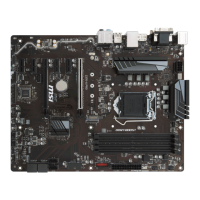
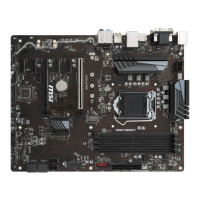
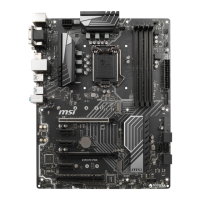

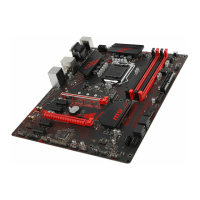
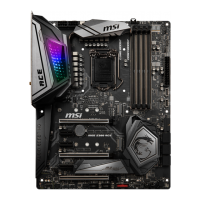
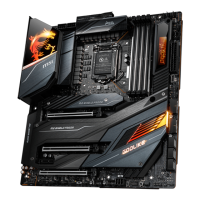
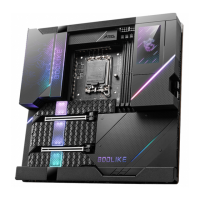

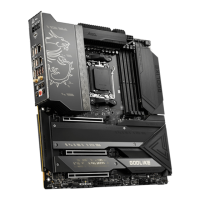

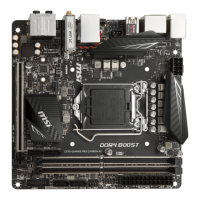
